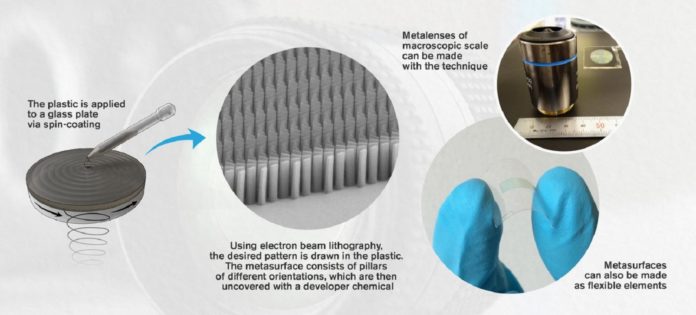Scientists from the Chalmers University of Technology, Sweden have developed a new technology for making the artificial materials known as ‘metasurfaces.’ The metasurfaces composed of a multitude of interacting nanoparticles that together can control light.
Scientists developed this technology based on a plastic that is already used today to create other microstructures.
Daniel Andrén, a Ph.D. student at the Department of Physics at Chalmers, said, “We put a thin layer of this plastic on a glass plate and, using a well-established technique called electron-beam lithography, we can draw detailed patterns in the plastic film, which after development will form the metasurface. The resulting device can focus light just like a normal camera lens, but it is thousands of times thinner – and can be flexible too.”
With the explosion of capacity demands driven by the Internet, optical systems are experiencing tremendous growth. These technologies have developed extremely rapidly in recent years, due mainly to smaller and more effective circuit components.
However, camera lenses themselves have not changed as much. However, camera lenses themselves have not changed as much. Most of today’s lenses depend on the same physical principles, and include similar basic limitations, as the main models developed in the sixteenth century. In the previous decade, be that as it may, analysts have started to work with artificial materials – metasurfaces – that could replace today’s lenses.
The new technology uses harmless chemicals, as well as machines that are already common in nano-manufacturing laboratories today, meaning that more researchers could now begin to study metasurfaces.
Ruggero Verre, a researcher at the Department of Physics at Chalmers, said, “Our method could be a step towards large-scale production of metasurfaces. That is the goal we are already working towards today. Metasurfaces can help us create different effects and offer various technological possibilities. The best is yet to come.”
Journal Reference:
- Daniel Andrén et al., Large-Scale Metasurfaces Made by an Exposed Resist. DOI: 10.1021/acsphotonics.9b01809
